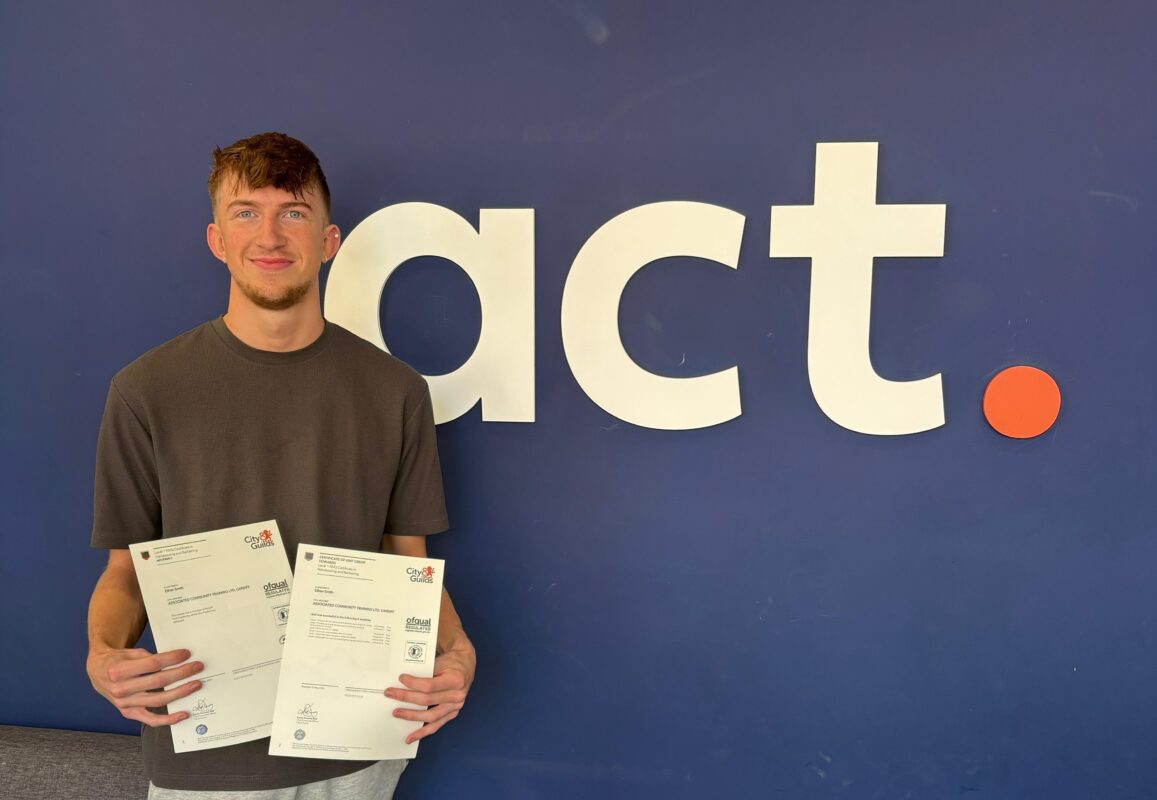Beyond the Glass Ceiling: Matching Creativity in Education with Contextual AI

As AI continues to transform our daily lives, we find ourselves at an important conceptual intersection. In my previous works, I have fervently championed AI applications that are not only contextually informed but also thoughtfully executed. Recognising the substantial benefits AI can offer, while being acutely conscious of the potential unintended consequences that can occur, if not carefully managed.
This technology is indisputably poised to change our future. In this article, I aim to elaborate on the connections of AI and gamification within the educational sector, using this arena as a means to explore the creative contextualised capacities of AI in tangible settings. My hope, is that my dual perspective as both an educator and a developer positions me to offer a potentially distinctive insight into this discourse. While gamification is an established facet of educational methodology, its integration with AI remains largely unexplored. My objective is to investigate how gamification, augmented by contextually adaptive AI, could, and more importantly should, revolutionise the educational landscape
The Risks of Implementing ‘Flat’ AI Systems in Education
My journey through the realm of AI in education has presently culminated in the development of four internationally released customised GPTs, each helping me to achieve a deeper understanding into the world of personalised AI experiences. I have attempted to chronicle my journey in a series of writings, beginning with “Navigating the Chair,” where I underscored the critical need for contextualisation in AI. This then expanded into “Configuring for Contextuality,” examining how customisation layers in AI can significantly enhance its relevance and effectiveness through the theoretical application of “Archetypes”.
Recently in my previous article, ‘Shaping Futures,’ I explored the connections between content creation, socio-economic challenges, and the critical need to embed AI deeply within the contextual fabric of our society. This continued exploration brought me to a recurring and concerning observation: the current use of AI across various sectors is often superficial, mainly focused on resource generation. While these applications do save time, these flat systems only marginally tap into the vast potential of AI to transform and elevate the way we work and interact.
In this context, ‘flat AI systems’ refer to AI applications that are employed in a rudimentary and superficial manner, typically for tasks such as generating uniform resources, or handling basic administrative duties. These systems are often shamefully characterised by their lack of depth in personalisation, contextual understanding, and creative adaptability. They adhere to a generic, one-size-fits-all approach, failing to address the varied needs and cultural nuances of their users.
Thus, it becomes critical to address the pitfalls associated with introducing uncontextualised, ‘flat’ AI systems in industry environments. The education sector as an example, with its rich variety of diverse backgrounds, cultures, and ages, necessitates AI solutions that are as multifaceted and nuanced as the individuals they are designed to assist. Relying on a generic, resource centric approach risks failing to meet the unique needs of teachers, support staff, and other roles within the educational sphere.
In this sense, the risks associated with inadequate AI systems are twofold. Firstly, an AI system that fails to resonate initially could create a negative first impression, potentially leading to a lasting aversion to the technology. This issue is exacerbated if the AI system is not accessible across different devices or is burdened with clunky interfaces, leaving a negative impression of the system. Secondly, the deployment of such a system without a thorough emphasis on seamless integration, and user experience, can be more problematic than beneficial. Educators, faced with a tool that does not align with their specific requirements, may find it obstructive rather than supportive, hindering their work rather than enhancing it. Abandoning the system, at the very point of its introduction.
Hence, the introduction of AI into educational realms must be approached with tremendous care and trepidation. It is vital that these systems are not seen merely as tools for efficiency but as partners enhancing the human element of teaching and learning. The initial experience with AI in a professional context sets the foundation for future interactions; a misstep here could be challenging to rectify. In this context, the role of teachers as pioneers of responsible and ethical AI usage also becomes paramount. The first AI solutions introduced must address the varied needs of the staff, demonstrating an in-depth understanding and response to their unique requirements.
This approach not only cultivates a positive rapport with technology, but also begins to model what responsible AI usage should look like. By introducing AI with an acute awareness of its impact on staff perception and engagement, we can position AI as a valuable ally in education. I will attempt to showcase this through theoretical examples, reflecting on the potential needs and perspectives of teachers, students and support staff. Each example aims to highlight the need for a thoughtful, context-rich use of AI in education, moving beyond traditional content creation.
Examples of theoretical use of Highly Contextualised AI in Education
In the continuing discussion on how best to harness the full potential of AI in education, it’s imperative to venture beyond its basic utility in creating resources like PowerPoints, lesson plans, or quizzes. Our aim should be a profound integration of AI, transforming it into a dynamic tool that significantly enhances learning experiences. Here are some potential examples that illustrate this concept:
Assignment Roulette (Teaching Staff Example):
This approach reimagines the conventional homework assignment. As a lesson concludes, students are given a choice: they can opt for the teacher created assignment or select an alternative crafted by the classroom AI. This AI is adeptly calibrated to the specific context of the class and the unique needs of each student, ensuring the assignment is not only relevant to the curriculum, but also stimulates engaging discussions among students about the value and intricacies of each option. Incorporating AI in this manner has the potential to infuse the latter part of a class with a burst of energy and enthusiasm, transforming a potential typical end-of-lesson routine into an exciting and thought-provoking experience.
Customised Learning Quests (Learner Example):
Imagine crafting individualised learning ‘quests’ uniquely designed to match each student’s progress, interests, motivations, and aspirations. These quests might comprise a series of tailored challenges, turning the educational process into a personalised adventure. For instance, in the context of preparing for a history exam, the AI could introduce an interactive ‘guess who’ game. It would present clues about significant historical figures for students to identify, transforming study sessions into an engaging and dynamic gamified experience.
AI Show and Tell (Learner Example):
In this exercise, students are tasked with researching a specific topic, using AI as a research assistant over the weekend to explore essential concepts in their field. Following this investigative session, they are asked to present their findings in their own words, effectively demonstrating their grasp of the subject. Additionally, students reflect on their experience using AI, providing insights into what aspects they found beneficial or challenging. This activity not only hones skills in research, fact-checking, and effective communication but also fosters an environment of peer-to-peer learning. Through this collaborative process, students share diverse insights and perspectives, significantly enriching the collective learning experience.
AI-Assisted Interviews (Support Staff Example):
In this scenario, an AI system plays a supportive role during student interviews. It is equipped to comprehend and systematically record responses in alignment with pre-programmed interview questions. Operating discreetly in the background, the AI efficiently organises responses onto data-sheets. This approach aims to foster a more natural and engaging interaction between the interviewer and the candidate, emphasising a ‘face-to-face’ dynamic rather than a ‘heads-down’ focus on note-taking. By streamlining the administrative aspects of the interview process, this AI assistance allows for a more human-centric and interactive interview experience.
Safeguarding and Support with AI(Support Staff Example):
In this application, AI serves as a dynamic, interactive knowledge base, primarily in the form of a Q&A system, for safeguarding teams and student support services. It holds a repository of essential information and offers customised advice and resources. When learners or staff face uncertainties or challenges, instead of sifting through emails or extensive documentation, they can directly query the AI for immediate assistance. This approach not only resolves issues swiftly but also ensures that support is tailored and responsive to individual needs, enhancing the efficiency and effectiveness of safeguarding and support services.
Culturally Inclusive Learning Environments with AI(Teacher Example):
Envision an AI system designed not just to assist non-native speakers with language barriers, but also to be deeply attuned to their cultural context and heritage. Picture a Japanese student engaging with learning materials that are thoughtfully interspersed with references to Japanese culture, iconic landmarks, or renowned historical figures. This level of nuanced personalisation would not only enhance the learning experience, but also instills a sense of value and connection in students, especially those new to the local community. Such an approach could foster a sense of belonging and creates an educational environment that is both welcoming and inclusively attuned to diverse cultural backgrounds.
These examples are intended to highlight a shift towards a more profound and impactful use of AI in education. They demonstrate AI’s ability to extend beyond simple resource generation, enhancing the educational process, empowering teachers to approach lessons innovatively, increasing student engagement, and facilitating personalised learning experiences. This encapsulates the real potential of AI in education – it’s not solely about task automation, but about creating personalised, engaging, and effective learning environments.
The true value of AI becomes apparent when it is custom-designed to cater to the distinct needs and experiences of its users, thus fostering a more empathetic, contextually aware, and effective educational framework. This approach forms the foundation of responsible AI usage: it serves as a bridge to acknowledge and respect the diverse backgrounds and experiences of individuals, elevating its function beyond just a tool for efficiency.
Case Study (Real-World Example): Overcoming Language Barriers in Digital Marketing Education
Historically, while running a Digital Marketing bootcamp, I experienced a particularly illuminating incident that highlighted the necessity for innovative approaches in education. I had a student from Spain with an impressive academic record. Yet, she encountered a notable obstacle when we explored the concept of ‘psychographic profiling’ – a fundamental aspect of market segmentation. This challenge brought to light the diverse needs present in educational settings.
The term ‘psychographic’, and its specific application in marketing, didn’t have a direct translation in Spanish. This linguistic barrier posed a persistent problem, not just in terms of language but also in conceptual understanding. Over two weeks, we tackled this understanding, which was further complicated by the absence of a corresponding term in her native language. This issue not only initially impeded her learning, but also affected her confidence.
In a classroom equipped with a contextually aware AI, capable of sophisticated language processing and translation, this situation could have been handled much more effectively. Imagine an AI system that could converse with my Spanish learner, understand the educational context, and translate the term ‘psychographic profiling’ into a culturally and linguistically resonant explanation. This AI could provide examples relevant to the Spanish market, or draw parallels with concepts familiar to her, that I as a UK resident would have no knowledge of.
Such an AI would have allowed my learner to immediately bridge the gap between English marketing terminology and her own linguistic and cultural framework. It could have adapted the explanation to her specific background, facilitating a deeper understanding not just of the language but of the underlying marketing principles. Furthermore, this AI’s ability to provide realtime assistance and culturally relevant examples, would have not only resolved the immediate linguistic issue but also enriched the learning experience for the entire class. It would demonstrate the power of AI in creating inclusive, responsive, and effective educational environments, sensitive to the diverse needs of learners and potentially shared some insights about Spanish culture, and their marketing efforts.
Unleashing Creativity in AI-Enhanced Education
The argument presented then is clear: to fully realise AI’s potential, we must look beyond its time-saving aspects. We should strive for a paradigm shift where AI is a catalyst for growth, deepening understanding and engagement across the educational landscape. It’s not merely about producing quick quizzes or basic presentations; it’s about using AI to craft immersive, personalised learning experiences that resonate profoundly with everyone involved in that educational journey. The prevailing trend of employing AI primarily for resource generation represents a narrow interpretation of its vast potential and should not be pursued uncritically. The examples of gamification across educational contexts, demonstrate not only AI’s capability to enhance learning experiences, but also its potential to fundamentally revolutionise the dynamics of engagement, motivation, and empowerment in education and wider sectors.
The key to unlocking this expansive potential; creativity. Too often, the integration of new developments is stifled by a lack of imagination and a rigid adherence to traditional methods. We must break away from the myopic view of AI as merely a tool for creating presentations or automated responses. Instead, we should explore its capacity to craft dynamic, engaging, and deeply personalised learning experiences that fundamentally change the way we see the world.
Educators and developers must join forces to deeply understand the unique needs and cultural backgrounds of those they aim to assist, utilising this knowledge to steer the development of impactful AI applications. This endeavour transcends mere technology usage; it’s about redefining the contours and edges of what education can be, and where it could go. When applied creatively, AI has the potential to elevate our teaching approaches, fostering an environment that nurtures creativity, promotes motivation and autonomy, and deeply resonates with educators and learners alike.
The essence of our role as educators is to continuously reflect, interpret, and employ the most suitable methodologies in our teaching, not merely the most streamlined ones. As teachers, we are ideally positioned to guide the ethical and effective utilisation of these systems. Our expertise in our sector enables us to lead by example, showing the communities we interact with how to fully harness the capabilities of AI in society ethically. We must embrace this responsibility – to utilise these powerful tools not only for efficiency, but also for the good and enrichment of future generations to come.
Therefore, the responsibility rests with us, as educators, to lead this transformative journey. By arming ourselves with the knowledge of how to use AI in innovative and meaningful ways, we can aim to set a powerful example, inspiring a new generation of learners. These future trailblazers will be responsible for advancing the ethical and impactful application of AI in their fields. Our goal then should be, to illuminate the role of AI in education not simply as a tool for streamlining processes, but as a springboard for growth, exploration, and creative ideas and engagement. We should aim for nothing less than to metaphorically shatter the glass ceiling, and soar beyond existing educational paradigms, venturing into new, uncharted territories and environments. This I believe will allow us to redefine the boundaries of what is possible in education, using AI as a lever to uplift, innovate, and transform the learning experience.
So, as we advance into a future where AI integrates more deeply into our professional realms, I encourage you to ponder a crucial question: How can we, as practitioners and innovators, harness the extensive potential of AI to not only enhance our professional methods, but also to strengthen our connections with one another? Imagine the far-reaching possibilities, particularly in the context of education — how might AI revolutionise teaching methodologies to make them more inclusive, engaging, and attuned to the needs of both educators and students? As we navigate this evolving landscape, let’s set our sights higher than mere resource creation. Let’s embrace the profound, the creative, transformative capabilities of AI to not just reshape the educational sphere but to redefine what our work practices could look like.
By Chris Pegg, Bootcamp Lead, Apple Certified Educator, Work Based Tutor at Exeter College











Responses